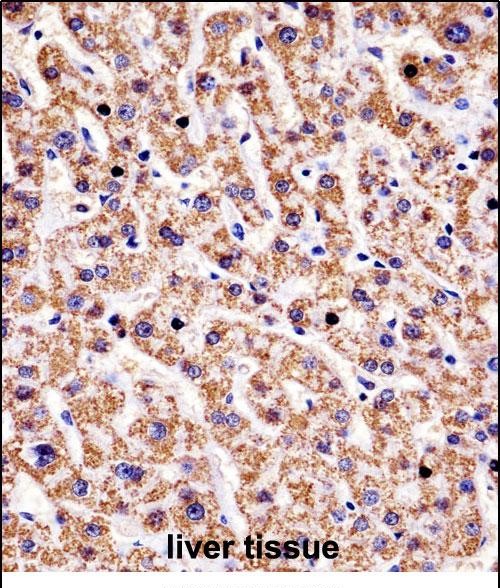

| WB | 1/1000 | Human,Mouse,Rat |
| IF | 咨询技术 | Human,Mouse,Rat |
| IHC | 1/100-1/500 | Human,Mouse,Rat |
| ICC | 技术咨询 | Human,Mouse,Rat |
| FCM | 咨询技术 | Human,Mouse,Rat |
| Elisa | 咨询技术 | Human,Mouse,Rat |
| Aliases | Hyaluronidase-1, Hyal-1, Hyaluronoglucosaminidase-1, Lung carcinoma protein 1, LuCa-1, HYAL1, LUCA1 |
| Entrez GeneID | 3373 |
| WB Predicted band size | 48.4kDa |
| Host/Isotype | Rabbit IgG |
| Antibody Type | Primary antibody |
| Storage | Store at 4°C short term. Aliquot and store at -20°C long term. Avoid freeze/thaw cycles. |
| Species Reactivity | Human |
| Immunogen | This HYAL1 antibody is generated from rabbits immunized with a KLH conjugated synthetic peptide between 280-309 amino acids from the C-terminal region of human HYAL1. |
| Formulation | Purified antibody in PBS with 0.05% sodium azide. |
+ +
以下是关于HYAL1抗体的3篇参考文献及其简要摘要:
---
1. **文献名称**: *HYAL1 overexpression in bladder cancer promotes tumorigenesis through hyaluronan degradation*
**作者**: Stern R, et al.
**摘要**: 该研究利用HYAL1特异性抗体检测膀胱癌组织中HYAL1的表达水平,发现其过表达通过降解透明质酸促进肿瘤侵袭,且与患者不良预后相关。
2. **文献名称**: *HYAL1 as a potential biomarker for prostate cancer progression*
**作者**: Bharadwaj AG, et al.
**摘要**: 通过免疫组化分析(使用抗HYAL1抗体),研究发现前列腺癌中HYAL1高表达与转移风险增加相关,提示其可作为疾病进展的生物标志物。
3. **文献名称**: *Development of a polyclonal antibody against human HYAL1 for serum detection*
**作者**: Zhang L, et al.
**摘要**: 研究团队成功制备兔源多克隆HYAL1抗体,验证其特异性后应用于ELISA检测,证明其在癌症患者血清中HYAL1水平显著升高,具有诊断潜力。
---
以上文献涵盖了HYAL1抗体在肿瘤机制研究、生物标志物探索及检测技术开发中的应用。如需具体文章链接或更多文献,可进一步提供检索关键词或数据库范围。
HYAL1 antibody is a research tool designed to target HYAL1. a lysosomal enzyme belonging to the hyaluronidase family. HYAL1 (hyaluronidase 1) is one of six human hyaluronidases that degrade hyaluronic acid (HA), a major component of the extracellular matrix. Unlike other isoforms, HYAL1 functions optimally at acidic pH and plays a critical role in cleaving high-molecular-weight HA into smaller fragments, influencing processes like cell proliferation, angiogenesis, and inflammation. It is expressed in various tissues, including the liver, kidneys, and certain cancer cells, where its dysregulation has been linked to tumor progression, metastasis, and chemoresistance.
HYAL1 antibodies are primarily used in biomedical research to detect and quantify HYAL1 protein expression in cells or tissues. They enable applications such as Western blotting, immunohistochemistry (IHC), and immunofluorescence (IF), aiding in the study of HYAL1's localization and function. Commercially available antibodies are typically raised in rabbits or mice using specific HYAL1 peptide antigens, and their specificity is validated via knockout controls or siRNA-mediated silencing.
Research involving HYAL1 antibodies has highlighted their potential in cancer diagnostics and therapy. Elevated HYAL1 levels correlate with poor prognosis in malignancies like bladder, breast, and pancreatic cancers, suggesting its utility as a biomarker. Additionally, targeting HYAL1 with inhibitory antibodies or small molecules is being explored to disrupt HA-mediated signaling pathways in tumors. Despite progress, challenges remain in understanding HYAL1's context-dependent roles and optimizing antibody specificity for clinical translation.
×